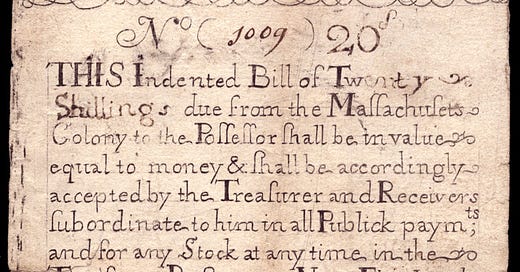Most people find money fascinating. Long-ago episodes in the historical evolution of monetary arrangements can be a different matter.
In his new book Easy Money, however, economist Dror Goldberg manages to make one such episode, more than three centuries in the past, not just interesting but important. Goldberg’s focus is the issuance of a new form of paper money in 1690 Massachusetts. He argues that this instance—in a single British colony, three thousand miles from London or any other major-power capital or financial center—marked the first emergence of modern paper money as we know it. It was, he writes, “a conceptual shift in the foundation of the monetary system”; “a monetary revolution”; “a landmark in monetary and fiscal theory.”
Keep reading with a 7-day free trial
Subscribe to Book Post to keep reading this post and get 7 days of free access to the full post archives.



